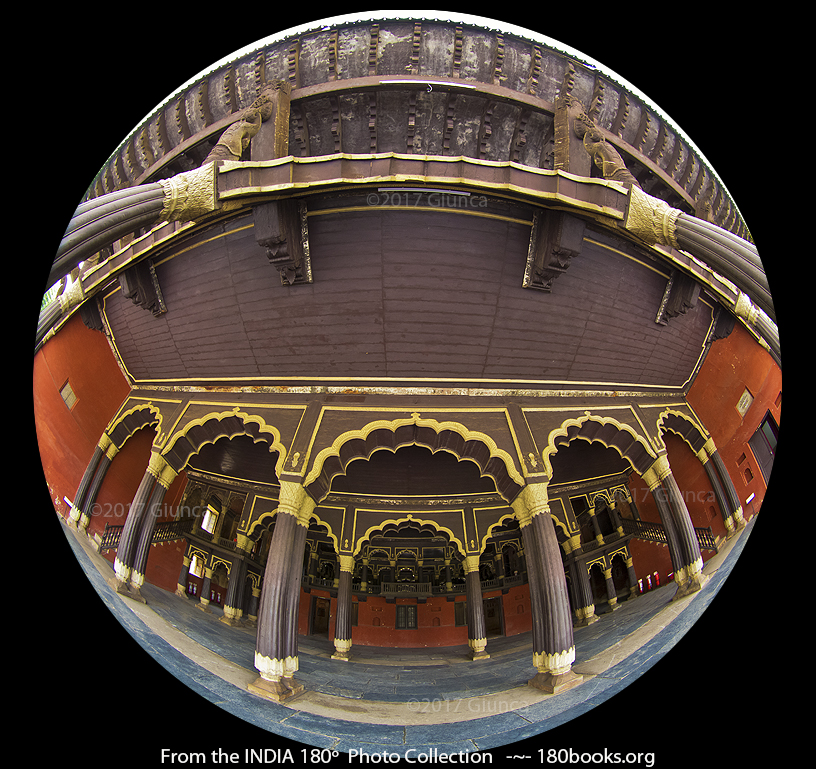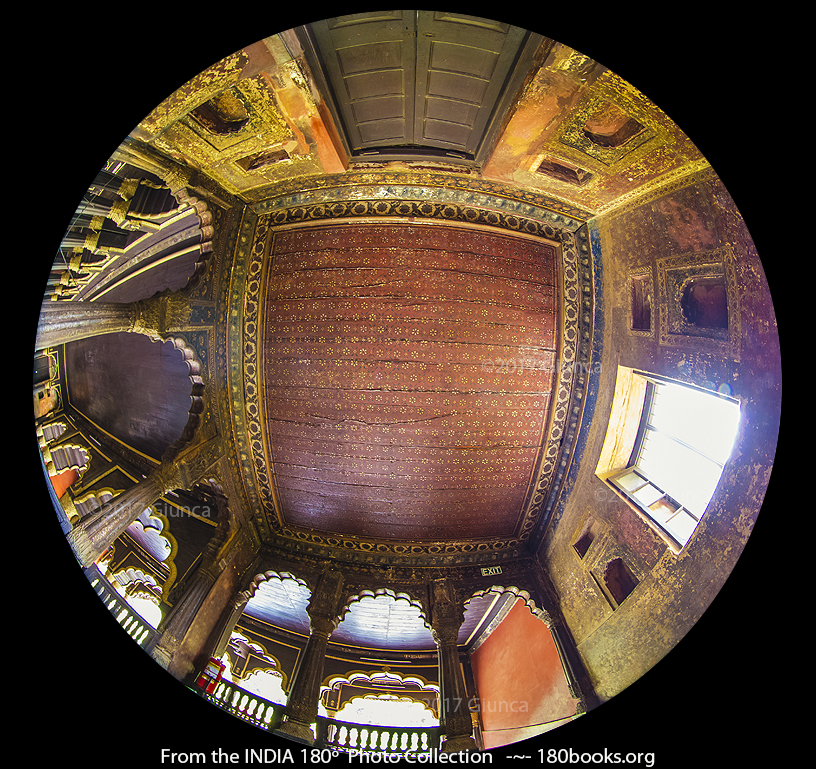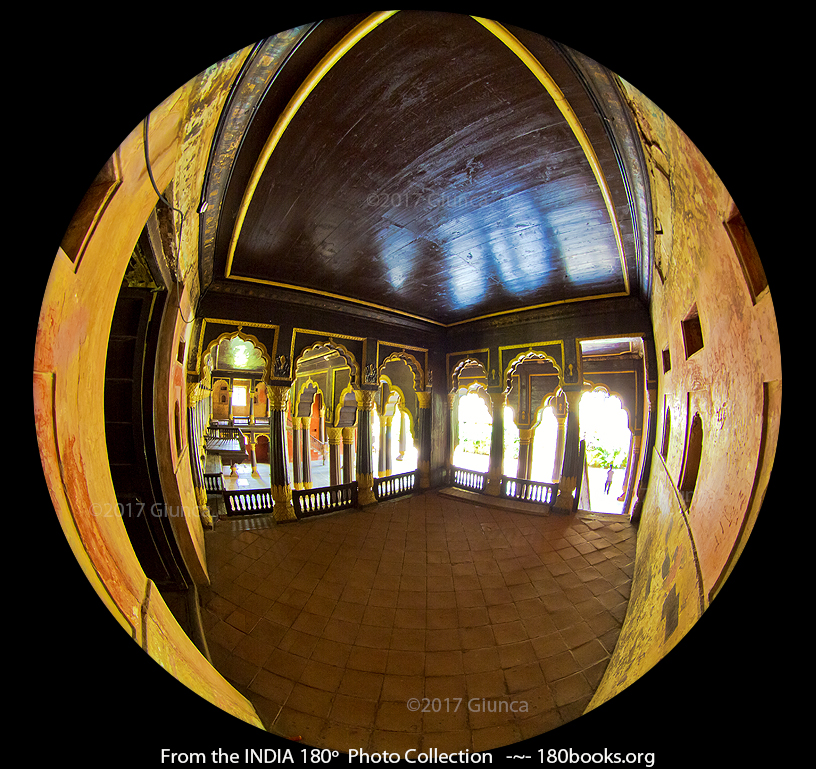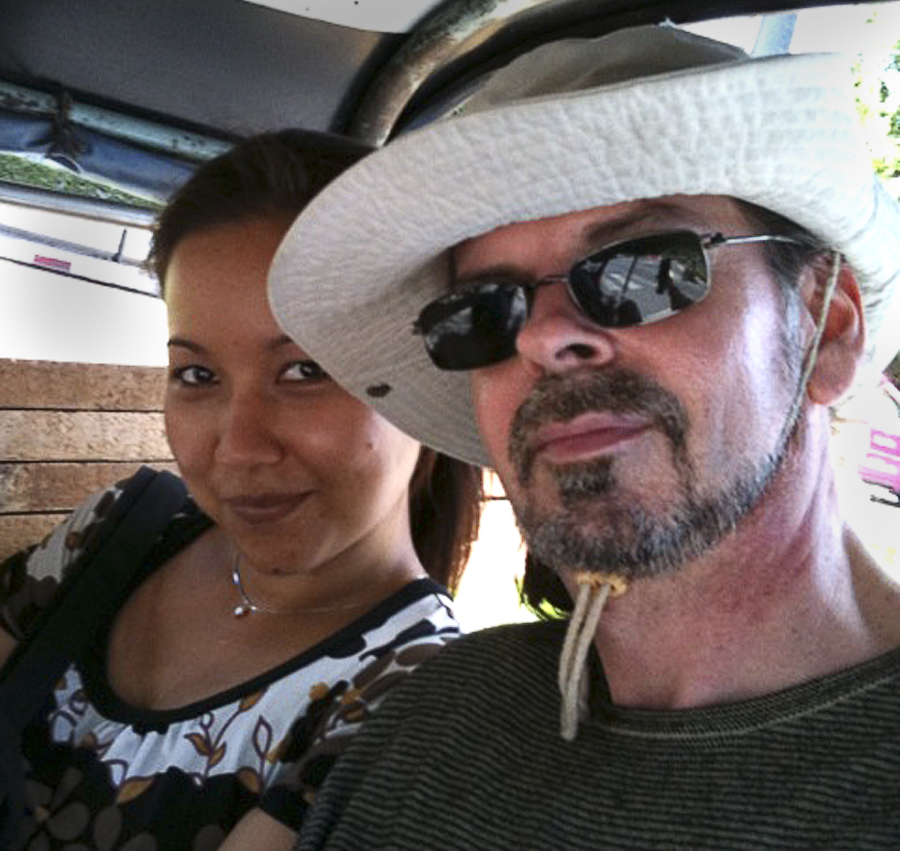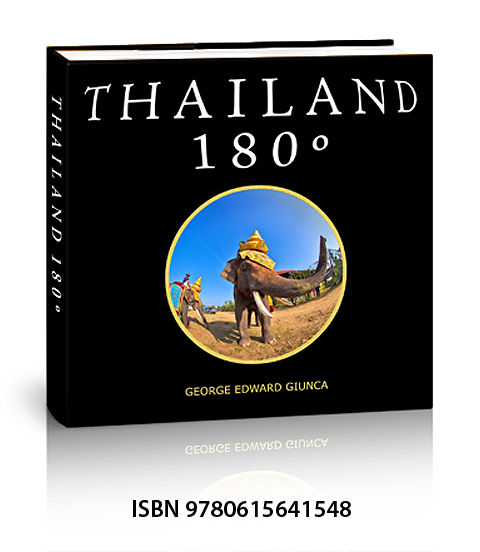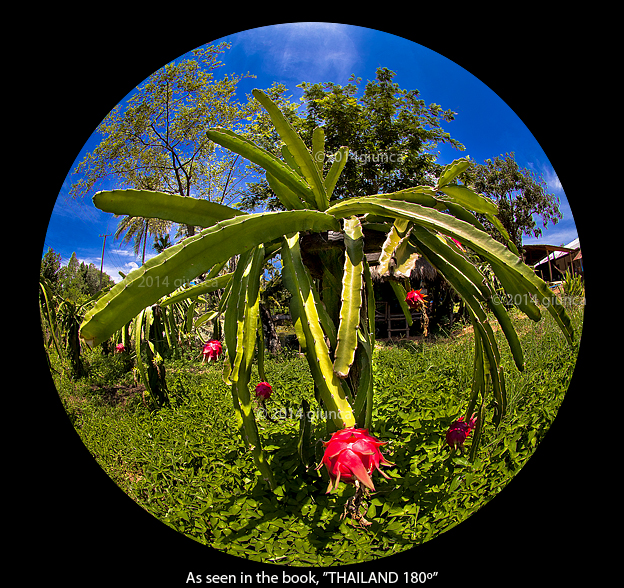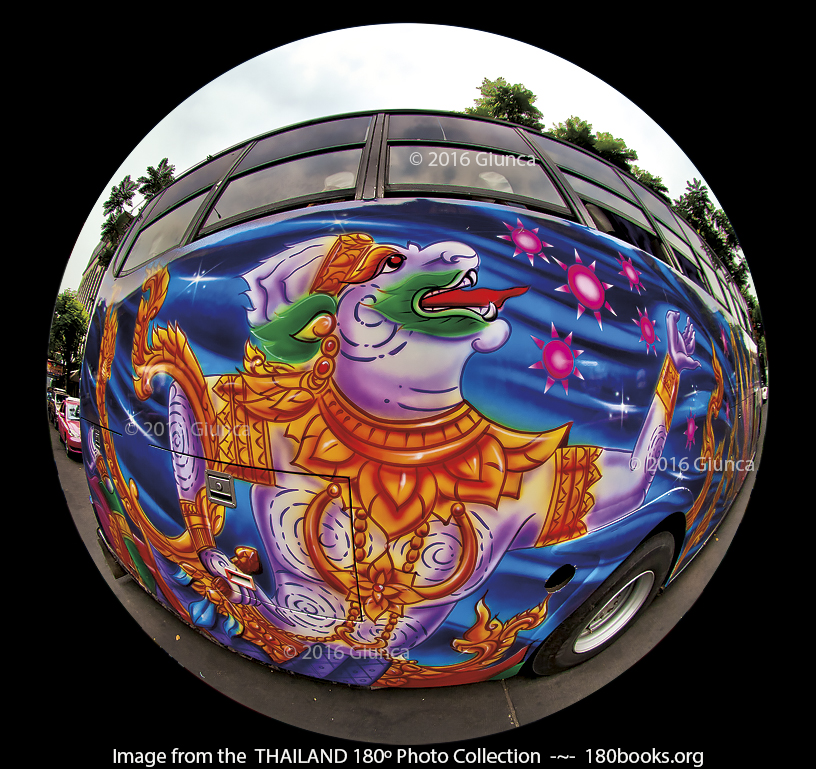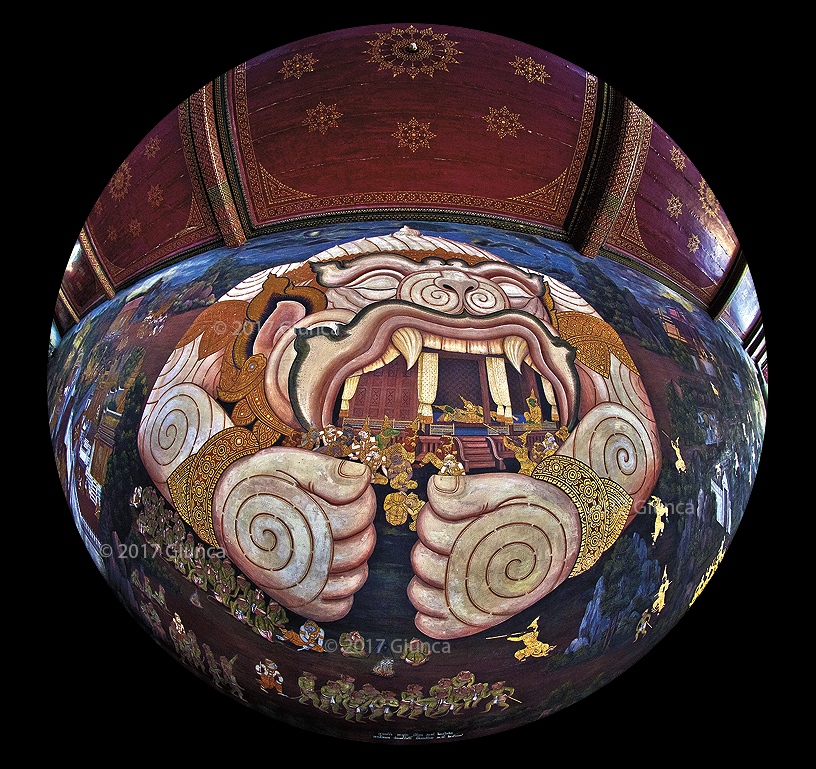Tipu Sultan’s Teak Palace in Bengaluru, India ~ วังสุลต่านทิปู เมืองเบงกาลูรู ประเทศอินเดีย
While many tourists travel to Bangalore to visit the Mysore Palace, we’d like to show you the “Tipu Sultan’s Teak Palace”! We visited this palace in the monsoon season, so it was difficult to take photos of the outside because of our unique concept of using the circular fisheye lens BUT we have some gorgeous and magnificent angles of the Tipu Sultan’s Summer Palace to show you. Come on in!…
— “หลบสายฝน ในวังสุลต่าน” ฟังแล้วเหมือนนิยายป๊ะล่ะ!! —
… ไปเมืองบังกาลอร์ช่วงฤดูมรสุม สายฝนโปรยปรายทั้งวัน หนักบ้างเบาบ้าง ถ่ายภาพกลางแจ้งก็ลำบากค่ะเพราะใช้เลนส์ circular fisheye ตามคอนเซ็ปต์ ทำให้ไม่สามารถคลุมฮู้ดหรือกางร่มเพื่อถ่ายภาพเหมือนเลนส์ชนิดอื่นได้ จึงถ่ายภาพด้านหน้าอาคารมานิดเดียวแล้วก็หลบฝนเข้ามาชมภายใน “วังสุลต่านทิปู” …ตามมาชมกันค่ะ…
Bangalore / Bengaluru ~ บังกาลอร์ / เบงกาลูรู
Bangalore, or Bengaluru as it is now formally called, is known as the “Silicon Valley of India” or “IT capital of India” because of its role as the nation’s leading information technology (IT) exporter. According to Jones Lang Lasalle’s 2017 City Momentum Index (CMI), it is one of the most dynamic cities in the world based on it’s socio-economic, commercial real-estate, and long-term momentum. Indian technological organizations ISRO, Infosys, Wipro, and HAL, are headquartered in the city. Sounds like a big IT town, doesn’t it? … Once we were there and traveled around to observe the residents daily way of life, we found their souls and mind are still anchored by their culture. The Hindu temples and Islamic Mosques are full of devotees in various activities, just as other less Hi-tech areas. The architectural styles of the city are quite diverse including some examples of original Southern Indian architecture, as well as Neo-Dravidian, Pallava and Ganga, Gothic, ….AND Indo- Islamic architecture styles such as the Tipu Sultan’s Summer Palace and Fort, which we enjoyed exploring.
เมือง “บังกาลอร์ (Bangalore)” หรือปัจจุบันมีชื่ออย่างเป็นทางการว่า “เบงกาลูรู (Bengaluru)” เป็นเมืองหลวงของรัฐกรณาฏกะ (Karnataka) ทางตะวันตกใต้ของประเทศอินเดีย ในความเป็นเมืองหลวงและเป็นซิลิคอนวัลเลย์ของอินเดีย บังกาลอร์เป็นเมืองที่มีพลวัตสูงเป็นอันดับหนึ่งของโลก มี GDP และการลงทุนโดยตรงจากต่างชาติสูง, มีสำนักงานใหญ่ของบริษัทต่างๆ ตั้งอยู่ เช่น ISRO, Infosys, Wipro และ HAL …แต่เมื่อได้ไปเที่ยวชมรอบเมืองบังกาลอร์ จะเห็นว่าศาสนสถานยังมีผู้คนหลั่งไหลมาด้วยความศรัทธา ไม่ว่าจะเป็นศาสนสถานฮินดู, อิสลาม, หรือคริสต์ อีกทั้งวิถีชีวิตวัฒนธรรมการแต่งกาย, อาหาร, พิธีกรรม, ความเชื่อ, จิตวิญญาณยังคงความเป็นอินเดียไว้มากทีเดียว เบงการูลูเป็นอีกมหานครหนึ่งที่มีทั้งสถาปัตยกรรมหลากหลาย อาทิ สถาปัตยกรรมแบบอินเดียใต้, นีโอ-ดราวิเดียน, ปัลลวะ, กอธิค และอื่นๆ รวมถึงสถาปัตยกรรมอินโดอิสลามิก อย่างเช่น วังสุลต่านทิปู
History of Tipu Sultan’s Palace ~ ประวัติความเป็นมาของวังสุลต่านทิปู
Hyder Ali started building the palace in 1781 and his son, Sultan Tipu completed it in 1791. Since then, the people began calling it Tipu’s Palace. Although the palace seems small, the attractions here are its beautiful architectural details, and it’s celebration of Indian and Islamic styles. The teak columns decorated with beautifully carved motifs and the curved archways are prime examples.
The first floor has a large hall with a small room at each corner is accessed via one of four stairways. The rooms were used by the ladies of the royal family or Zenana. There are balconies on the east and west side which are where state officials sat when the Sultan held Durbar, which were meetings dealing with affairs of the state. The red colored walls with golden embellishments are stunning, and I was able to capture all of this with my lens by laying on my back.
วังสุลต่านทิปู เป็นสถาปัตยกรรมแบบ Indo- Islamic มีทั้งส่วนที่เป็นวังและป้อมปราการ ที่นี่เป็นอนุสรณ์สถานแห่งการต่อสู้ของสุลต่านทิปูต่อการปกครองของอังกฤษ … สุลต่านทิปู เป็นผู้ปกครองอาณาจักรไมซอร์ ในช่วงศตวรรษที่ 18 ชื่อเต็มของสุลต่านทิปู คือ Badshah Nasib ad-Dawlah Sultan Sayyid walShareef Fateh Ali Khan Bahadur Tipu ซึ่งสมัยของสุลต่านทิปูเป็นสมัยเดียวกับ นโปเลียน โบนาปาร์ต ที่กำลังก้าวขึ้นมาเป็นนายพลและส่งสารติดต่อกับสุลต่านทิปูเพื่อร่วมมือต่อต้านกองทัพอังกฤษ
จากประวัติของท่านสุลต่านคือประมาณว่าเป็นนักรบและนักสู้มากกว่าที่จะเป็นผู้ปกครองบ้านเมืองแล้วเสวยสุขกับความหรูหราโอ่อ่า วังสุลต่านทิปูจึงมีขนาดไม่ใหญ่ โครงสร้างทำจากไม้สัก เสาไม้สักทั้งต้น ประดับคำ้ยันไม้แกะสลัก ประกอบกับซุ้มประตูโค้งสวยงามตามแบบสถาปัตยกรรมอิสลาม เห็นเล็กๆ แบบนี้ก็ใช้เวลาสร้างประมาณ 10 ปีเลยนะคะ ภายนอกดูเหมือนอาคารชั้นเดียวแต่พอเดินเข้าไปภายในดูมี 2 ชั้น มีบันไดขึ้น-ลงสี่ทิศ ชั้นบนมีห้องเล็กๆอยู่ตรงมุมอาคารทั้ง 4 ทิศ สำหรับเหล่านางใน-นางสนม และมีระเบียงโล่งตรงกลาง ซึ่งท่านสุลต่านใช้วังนี้เป็นสถานที่ต้อนรับแขกและปฏิบัติราชการ โดยเฉพาะการต่อสู้กับชาวอังกฤษเพื่อรักษาอาณาจักรของตนเอง แต่หลังจากที่สุลต่านทิปูเสียชีวิต กองทัพของสุลต่านพ่ายแพ้ต่ออังกฤษ แต่ท่านก็สู้อย่างสมศักดิ์ศรีพลีชีพเพื่อชาติ ดังวลีของท่านว่า “Better to live one day as a tiger than a thousand years as a sheep”
Who Was Tipu Sultan?
As I’ve often pointed out, I use traveling as an excuse to learn. After seeing the palace and hearing its story, I wanted to know more about Tipu. There’s a great story of him killing a tiger with a knife while on a hunting trip, after dropping the knife and recovering it to triumph. He was an innovator of the use of rocket artillery in warfare and was sought out by no less a man than Napoleon Bonaparte to forge an alliance with France to defeat the British. He was, however, a very controversial man and ruler. Whether history brands him as a freedom fighter or fanatic, he was one of the first Indian kings to die on the battlefield while fighting for his cause.
After the death of Tipu Sultan, the palace was used by the British as an administrative office. Later, efforts were made by the British army to sell the fort and palace. When the property proved to be too pricey, the furnishings were sold off or ended up in the British Museum, and the once proud palace fell into decay. Years passed, and parts of the building were renovated. In 2005 a museum was opened in the palace. Some of the original items of the Sultan were recovered and are now on display along with photos and paintings that give a glimpse of royal life in days gone by. Unfortunately, photos in the museum were not permitted, which meant that I was able to relax and enjoy the display.
…หลังจากสุลต่านทิปูเสียชีวิต กองทัพอังกฤษก็ยึดวังและป้อมของสุลต่านทิปูไว้ใช้ระยะหนึ่งแล้วก็ประกาศขาย แต่แพงเกิ๊น ขายไม่ออกค่ะ!! เลยทะยอยขายเฟอร์นิเจอร์, ของประดับตบแต่งวัง และข้าวของเครื่องใช้ออกไปมากมาย บางอย่างก็ไปปรากฏอยู่ที่พิพิธภัณฑ์ในอังกฤษ บางอย่างก็ถูกประมูลออกไปอยู่ในมือของนักสะสม ส่วนวังก็ถูกปล่อยให้ทรุดโทรมไปตามกาลเวลา เพิ่งจะมามีการปรับปรุงและจัดให้เป็นพิพิธภัณฑ์เปิดให้ประชาชนและนักท่องเที่ยวเข้าชมเมื่อสิบกว่าปีมานี้เอง
ภายในส่วนพิพิธภัณฑ์ (ห้ามถ่ายภาพ) ได้จัดแสดงประวัติของสุลต่านทิปู, ภาพถ่าย, ภาพเขียน, เครื่องใช้ของสุลต่าน รวมถึงเรื่องราวการนำเทคโนโลยีผลิตจรวดมาใช้ในการต่อสู้ในช่วงยุคสมัยของท่านด้วย โอ้ว..ความคิดท่านล้ำสมัยมากค่ะ
Planning a visit? Here are a few more details ~ ข้อมูลเพิ่มเติม
• Tipu Sultan’s Summer Palace Address: Allbert Victor Road, Chamrajpet, Bengaluru, Karnataka, 560018, India
• Hours: 8:30 AM – 5:30 PM (Every day)
• Entry Fee: INR 200 per person for non-Indians
• Camera Permit Fee: INR 25 per camera
• Visit Duration: Allow 1 to 2 hours
ข้อมูลเพิ่มเติมที่ควรทราบค่ะ
• ที่ตั้ง: Allbert Victor Road, Chamrajpet, Bengaluru, Karnataka, 560018, India
• เวลาเปิด-ปิด: เปิดทุกวัน ตั้งแต่เวลา 8:30 น. – 17.30 น.
• ค่าเข้าชม: สำหรับชาวต่างชาติ 200 รูปี/คน
• ค่าธรรมเนียมกล้องถ่ายภาพ: 25 รูปี/กล้อง
• ใช้เวลาประมาณ 1 – 2 ชั่วโมงในการชมสถานที่
!!..คลิ๊กแผนที่..!! ดูภาพสวยๆ อ่านบล็อกสถานที่ท่องเที่ยวจาก THAILAND 180º ได้นะคะ อัพเดทเพิ่มเติมตลอดค่ะ
We had to eliminate the ability to comment from this wordpress site due to excessive spam. If you enjoyed this story, subscribe using the “Subscribe” button below, or visit our facebook fan page to comment Here
We’d LOVE to hear from you!
ผู้ติดตามอ่านบล็อก สามารถติดตามอัพเดทโพสต์บล็อกได้โดยสมัครสมาชิกที่บล็อกนี้ หรือ กดไลค์เฟสบุ๊คเพจของเราที่นี่ Here
Blog : Thai by Apisatha Giunca
Blog : English by George Edward Giunca
About the Authors
Photographer George Edward Giunca, and his Thai wife, Apisatha, have traveled around Thailand armed with a circular fisheye lens to create a photo essay on the rich cultural diversity, and abundant natural beauty of the Kingdom of Thailand. Fleeing from angry water buffaloes, slapping huge mosquitoes, watching exotic festivals and religious rituals, gorging on delicious spicy food, applying aloe vera cream to sunburned skin, wading through rice paddies, getting drenched to the bone by heavy monsoon rains, and gawking at breath-taking scenery; made it a journey of epic proportions! The result is the book, THAILAND 180º. Later, they traveled extensively through Myanmar, Malaysia, and India, gathering a massive collections of 180º photos. They currently live in Chiang Mai where they continue to blog and are now working on a CHIANG MAI 180º book.
Graduation Gift Pre-Summer Vacation Sale ~~Our THAILAND 180º book is Now on Sale at 30% Off Here at Amazon!
Here’s How to Order Your Copy of THAILAND 180º Collectors EditionToday!
In Thailand —>>>http://www.thailand180.com/thaiorder.html
The Rest of the world: We are offering our book on Amazon.com, below list price and I’ll pay for the shipping within the United States! http://amzn.to/1knDPRR
Not Familiar with Our Book???
This show details the origin of 180 Books, a series of art/travel books illustrated with a circular fisheye lens. By using infographics, pictures from our THAILAND 180º book, and never seen before images from our vault, we’ll demonstrate this unique lens and present our unique books.
Also, because there’s nothing to watch on TV, here’s a trailer about our book, “THAILAND 180”
Above is an interactive map of Thailand. If you click on a marker it reveals a photo from our THAILAND 180º book and a link to our blog article about the photo. Go Ahead~ Start Exploring ~Have Some Fun!


